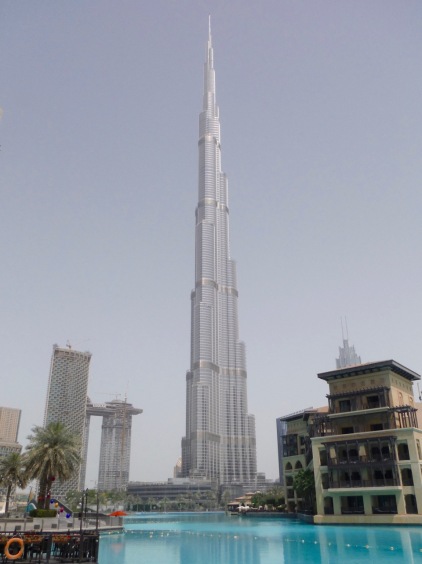
Faced with a half-day layover in Dubai recently, I decided to visit the tallest building in the world. I could have opted to visit a more architecturally pedigreed building, such as Concrete at Alserkal Avenue by OMA, or the Muraba Residences by RCR, both designed by Pritzker laureates. But no, I opted for the “marvel of engineering” that seemingly everyone else visiting The United Arab Emirates was also rushing to see, judging by the lineup at the ticket counter before it even opened. Dubai’s high-brow architecture can wait until another layover.

Fashion Avenue at the Mall of Dubai
The oddest thing about visiting the Burj Khalifa tower is the approach. It’s impossible for a visitor to enter through the building’s front door and lobby just like the everyday users of the building. Instead, visitors must approach this mega-skyscraper through an adjacent mega-shopping centre, the Mall of Dubai, from which a tunnel-like corridor containing an exhibition of gee-whiz factoids about the building leads to a ticket counter and waiting zone. At the ticket counter, a choice has to made between “At the Top”, a ride up an express elevator to the 124th and 125th floors that costs 135 AED (roughly €30), and “At the Top Sky“, a ride up another express lift to the 148th floor that costs a whopping 525 AED (nearly €120). Of course, I opt for the more ridiculously expensive option, figuring that you only live once (especially as an architect).
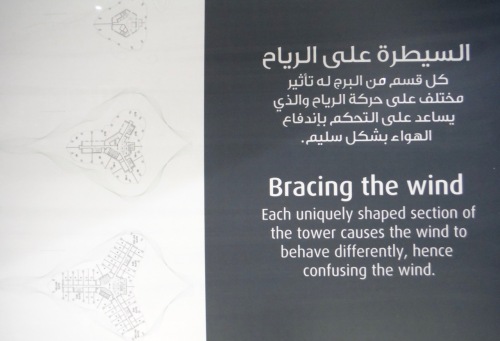
Exhibition panel on way to ticket counter: “confusing the wind”
I find out that “At the Top Sky” includes access to an exclusive ground-floor waiting lounge that offers views of the crowd in the regular waiting zone through one-way reflective glass, along with Arabic coffee and biscuits. Exclusivity evidently has its privileges. When the group for our time slot is finally assembled in the lounge, a jovial MC enters the room to explain that we’re about to ride the world’s fastest elevator, but that there is also the option to climb the nearly 3000 steps to our destination if we so prefer. Then it’s through security (fast-track, of course) and up the first of two elevators. As we are accelerated to a cruising speed of 10 meters or nearly three floors per second, graphics are projected on the elevator cabin’s interior walls of other super-tall buildings around the world being surpassed by our lift. When we reach level 124 we have to switch to another, smaller elevator to take us to level 148. It becomes evident now that the significant difference in ticket price is not proportional to the height that is reached, but rather to floor plate size (and the number of people that can be accommodated): floor 148 is tiny compared to the sky lobby replete with sprawling gift shop that is floors 124 and 125.

Inside one of the upper elevators
Of course, building a tower this tall and expensive is really only about one thing: achieving and maintaining a world record. Sure enough, a Guinness Book of World Records diploma hangs in the lounge at floor 148, assuring us that we are indeed in the world’s tallest building, lest anyone doubt it. The view from this altitude is of course remarkable. Looking down on all the other skyscrapers, many of which are themselves nothing to sneeze at in terms of height, what most becomes apparent is their architectural arbitrariness. In Dubai, anything goes, so there is a surreal mixture of styles ranging from the “Vancouverism” school of relatively restrained glass residential towers to the more gestural, formalist towers that take all sorts of twists and turns and are inevitably topped with some sort of useless doodad. One tower seems to be a homage to Big Ben, while another –under construction– appears to have been inspired by the Marina Bay Sands Casino in Singapore. Each tower design tries to outdo the other to attract buyers, not unlike perfume bottles displayed at an airport duty free shop.

View from level 125
Then there’s the tower that we’re in. On one level, it makes the least sense of all towers, precisely because of its height. The taller a building, the more space needs to be taken up by structure, elevators, stairs and mechanical systems, making the building less efficient in terms of usable space. This inefficiency is exponential with respect to height, so super-tall skyscrapers are hardly justifiable in terms of space. If they are not about space, then they can only be about monumental symbolism.
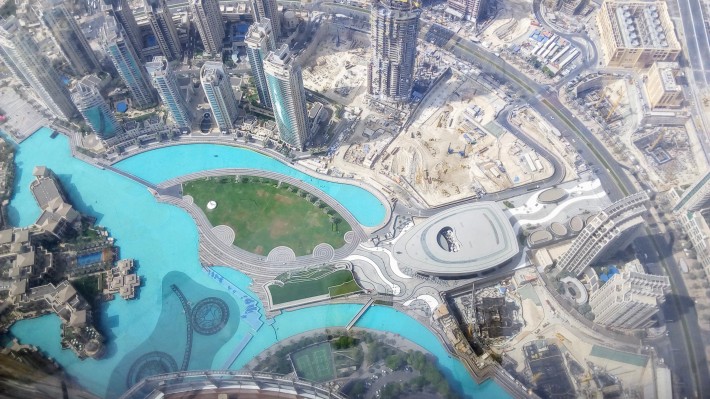
View from level 148
Of course, all architecture is a mixture of function and symbolism, but a building that leaves one out at the expense of the other is either pure functional utility or pure monumentality, and architecture is neither of these. The latter is essentially what we see here, in this case a super-monumental expression of wealth, power and modernity. Its interior space is merely a pretext: might as well use it for luxurious exlusivity. Of course, this is by far not the first occurrence of skyscraper post-rationalization. Gustave Eiffel tried to justify the utility of his Paris tower design with all sorts of potential scientific applications. Minoru Yamasaki famously wrote that The World Trade Center in Manhattan, destroyed by jihadist terrorists in 2001, was to be “a living symbol of man’s dedication to world peace.” Super-tall towers are monumental symbols much more than they are buildings.
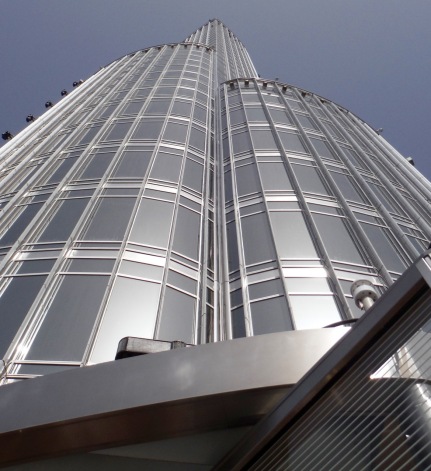
Looking up from level 125 outdoor observation platform
And yet on another level, the absurdly tall Burj Kahlifa is, at the same time, the most architecturally coherent of all the towers in Dubai. Far from being a capricious perfume bottle building, its form is actually very rational, even if its raison d’être is not. True: there are not very many architectural forms such a super-tall building can take, since the form must principally be dedicated to making it stand up. As a result of this structural constraint, the building actually has a clear architectonic logic to it; one that mimics, moreover, the structural curves of the Eiffel Tower, the “bundled tubes” structural concept of the Sears Building in Chicago, and the soaring slenderness of Frank Lloyd Wright’s architectural fantasy of a Mile-High Tower.
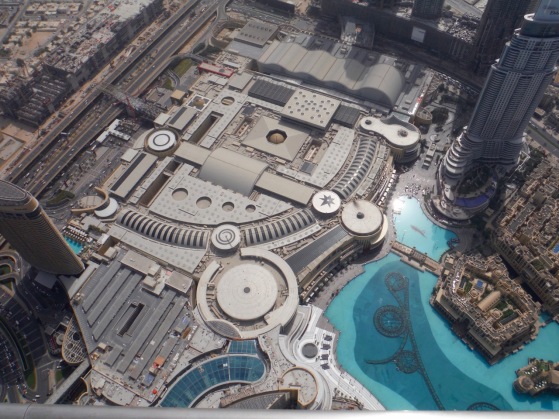
The adjacent Mall of Dubai seen from level 125 of the Burj Khalifa
At the end of the day, however, it has to be asked why cities should continue to be engaged in a race to break world records for building height. Even if new elevator concepts permit multiple cabins to share a single shaft, thereby significantly improving floor plate efficiency, we have to ask if it is still such a great idea to keep building higher and higher for no other real reason than the symbolic expression of power and technological prowess (not to say “progress”). The entire “tallest building in the world” thing has become a tiresome cliché. The same goes for the cantilever race that presumably more high-minded architects have been engaged in more recently. Times have changed since climate change. Now that we live in the Anthropocene, shouldn’t we be competing to build the best performing net-zero energy building instead? Or, if it really must be tall, then at least the highest wood building?
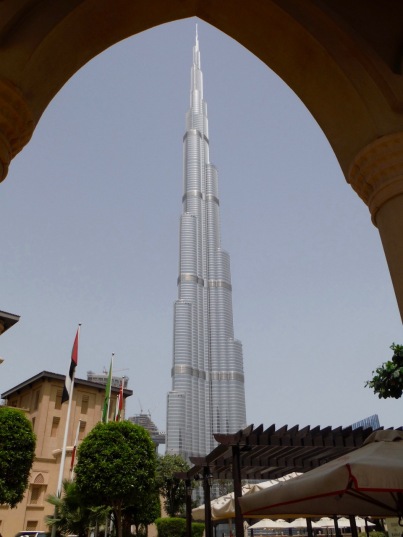
Sure, it was admittedly thrilling to visit the Burj Khalifa tower and look down, from its absurd height, upon a city that resembles a crisp, new architectural model. A part of me remains childishly fascinated by sci-fi technology. But at the same time, it’s evident that mega-tall buildings –and everything they stand for– can also be seen to represent our collective sinking to a new low.
Source: Criticalista

